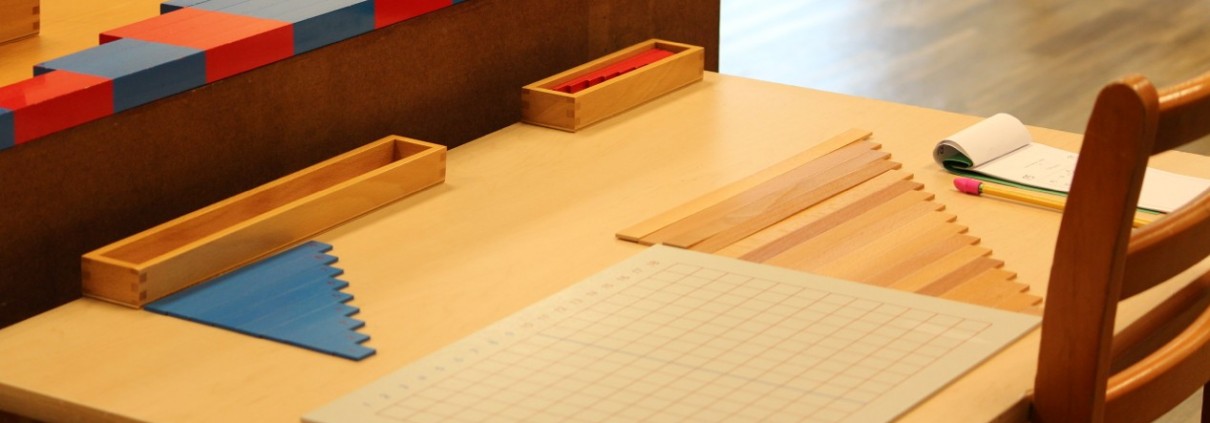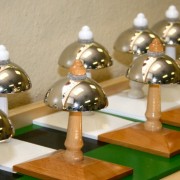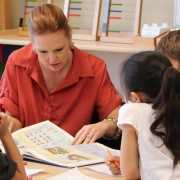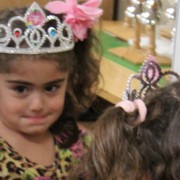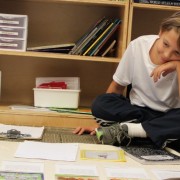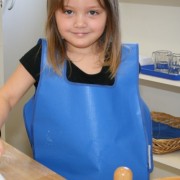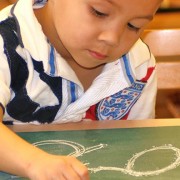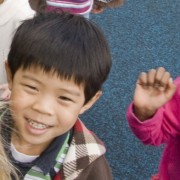Transitioning to Montessori: The Prepared Environment (Part 5 of 5)
Every fall, children transition to our Montessori programs from other preschools or elementary schools. What can parents do to help with this transition? In this series of blog posts, we lay out a few Montessori principles that apply at the later preschool and early elementary school level. Our focus is on children who transition into Montessori during their kindergarten through 2nd grade years, but many of the ideas suggested here are helpful for preschool children, too.
“Education is a natural process carried out by the child and is not acquired by listening to words but by experiences in the environment.”
“The environment itself will teach the child, if every error he makes is manifest to him, without the intervention of a parent or teacher, who should remain a quiet observer of all that happens.”
–Dr. Maria Montessori

A Montessori elementary classroom looks very different from traditional elementary school. Visit, and you’ll see children working alone or in small groups all around the room. They sit at small tables or work on mats: not a desk in sight. The teacher wanders between them, sitting with a child here and there for a few minutes, or bringing five children together around her desk now for a 10 minute small group lesson.
Parents often ask how the individualization of Montessori works: how can a teacher tailor his lessons to each child? How can there be order, when each child works on something different? How can children master the same fundamentals, if they have so much choice?
A key element to solving this apparent puzzle is what we call the prepared environment. Dr. Montessori observed that young children learn more from interacting with materials, then from listening to the words of teachers. That’s why the activity in a Montessori elementary classroom centers not on lectures and assignments, but on short lessons on how to use the activities spread out around the classroom on low shelves. These activities, plus the set of definite classroom rules that are essential to making freedom within limits work, are an essential part of the prepared environment.

In his Montessori elementary school class, a child receives lessons on how to use different materials. Once a material has been shown to him, he is free to use it to master the skills embodied in the material. A 2nd grader, for example, may receive a lesson setting up a multiplication problem on the Montessori checkerboard. Thereafter, he can spend many productive hours practicing this new skill, self-checking his results without adult intervention, as the problem cards have solutions on their back. The children understand and accept that they are free to practice and explore any material in which they’ve been given a lesson—and the teacher performs the ongoing responsibility of nurturing them towards materials that optimally engage and challenge them. The whole system works beautifully—if you don’t believe it, you can get a glimpse of it here!
In preparation for your child’s entry into Montessori elementary school this fall, you can implement some aspects of the prepared environment in your home. This will make it easier for him to feel at home, once he comes back to school in September. It will also enable him to share his experiences with you during the school year: while there is very little homework assigned in a Montessori lower elementary class, it’s not unusual for our enthusiastic students to want to share their work at home anyway!
- Set up a work area in your home. Invest in a few low bookshelves (Ikea works just fine), a child-sized table (not a desk), some child-sized chairs, and a few work rugs. Equip them with materials your child can work with – a set of high-quality colored and regular pencils, pencil sharpeners, scissors, glue, blank and story writing paper. Put your child’s books on the shelves so he can access them. You may also want to put other activities your child enjoys there – such as puzzles, arts & crafts activities or building materials. Finally, provide him with a place to put his completed work, such as a drawer or a file folder he can easily access.
- Provide guidance on how to work in this space. In a Montessori environment, each child is only permitted to have one activity out at a time. He takes it from the shelf and carries it to his work space (table or rug on the floor.) Once he is done, he replaces it on the shelf, and tidies up his work space (sweeping pencil droppings, carefully rolling up the rug and replacing it in his bin.) He can then choose something else to explore. You can establish similar rules at your home, and guide your child to complete the process. A nice side benefit: there will be less clean-up needed at the end of each day!
- Give him time and space to explore. Often, we over-schedule our children, taking them from one activity to another. 5- and 7-year-olds, just as younger children, benefit from some unstructured time. Now that you have set up his work space, you may suggest some ideas to get him started (see the follow the child post for details), then let him run with it!
The prepared environment in a Montessori elementary classroom is essential to helping a group of 20+ individual children work productively. Once your child is settled into his routine this fall, we invite you to come and observe him. We bet you’ll be surprised at what you see!
Read more in our Transitioning to Montessori blog series:
- Transitioning to Montessori: Independence (Part 1 of 5)
- Transitioning to Montessori: Freedom with Limits (Part 2 of 5)
- Transitioning to Montessori: Motor Skills and Indirect Preparation (Part 3 of 5)
- Transitioning to Montessori: The Follow the Child Principle (Part 4 of 5)
- Transitioning to Montessori: The Prepared Environment (Part 5 of 5)

